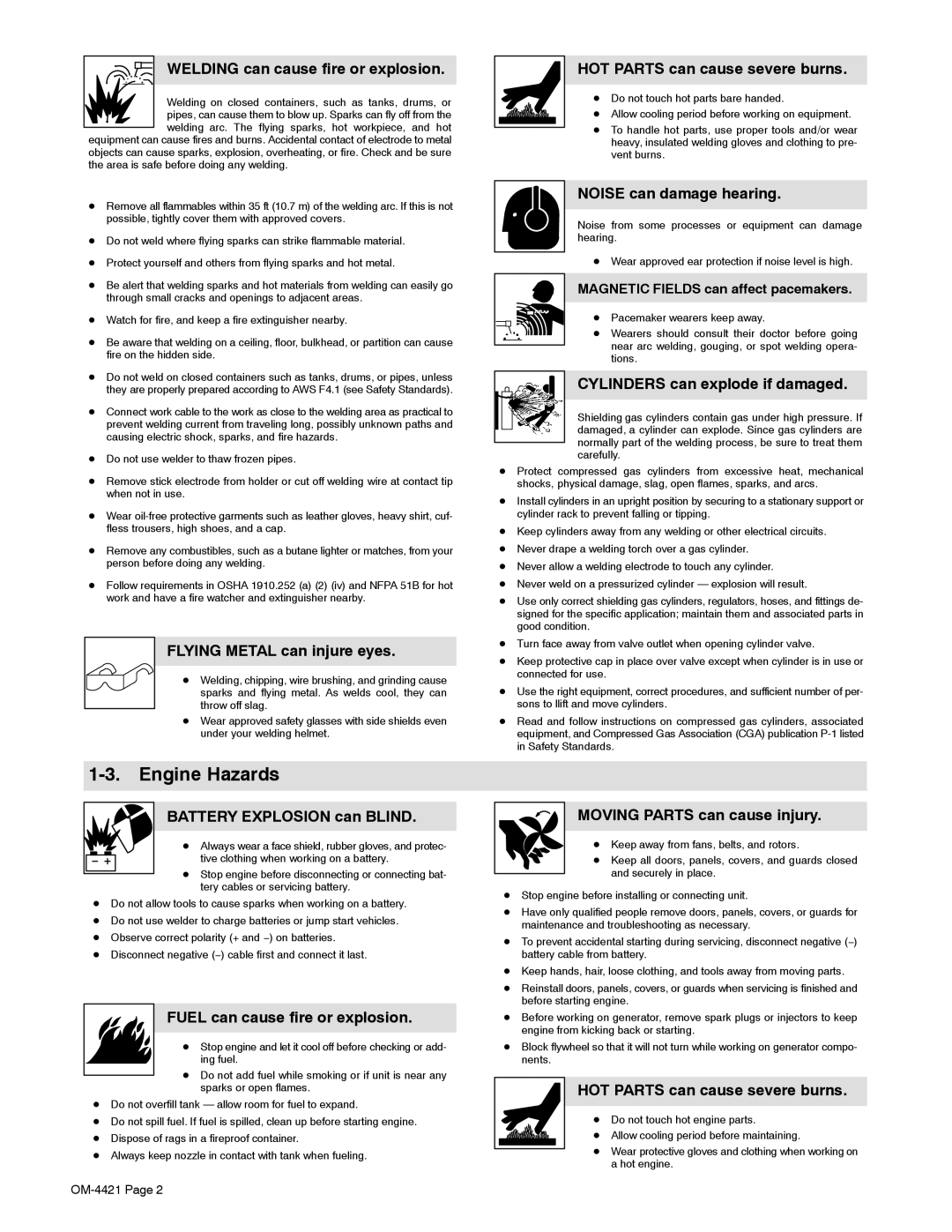Big Blue 500 X, Big Blue 400P specifications
Miller Electric has long been a trusted name in the welding industry, and their generators, particularly the Big Blue 400P and Big Blue 500 X, stand out for their performance, reliability, and innovative technologies. These portable diesel welding generators cater to a wide range of applications, from construction sites to industrial fabrication.The Big Blue 400P is designed for heavy-duty utilization, offering a powerful output of 400 amps at a duty cycle of 60%. It features a dependable Kohler engine that not only provides ample power but also contributes to its efficient fuel consumption, making it an economical choice for extended work sessions. The Big Blue 400P comes equipped with Auto-Stop technology, which automatically turns off the machine when not in use, conserving fuel and extending engine life. This feature showcases Miller's commitment to user-friendly designs that enhance both efficiency and sustainability.
On the other hand, the Big Blue 500 X takes performance up a notch with an impressive 500 amps output and a 60% duty cycle. It is powered by a high-efficiency Yanmar engine that ensures top-notch performance even in the most demanding conditions. This generator is equipped with Miller's X-CASE design, which features a rugged weather-resistant enclosure that protects internal components from harsh environmental conditions, ensuring durability and extended lifespan.
Both machines integrate advanced technologies such as Smart Tech, which optimizes the generator's output based on the specific demands of the welding process. This technology helps maintain a stable arc, enhancing welding quality and consistency. Additionally, both models feature the Auto Remote Start, allowing for quick operations without manual intervention, further advancing ease of use.
The versatility of the Big Blue 400P and 500 X is evident in their ability to perform a variety of welding processes, including Stick, MIG, and TIG. They are equipped with multiple outputs, allowing simultaneous powering of tools and auxiliary equipment, making them indispensable for professionals who need adaptability on the job.
Overall, the Miller Electric Big Blue 400P and 500 X embody the quality, performance, and innovative technologies that Miller Electric is known for. Their robust capabilities, coupled with user-friendly features, make these generators ideal for demanding applications in various industries, ensuring that welders can achieve excellent results, no matter the challenges faced on site.

